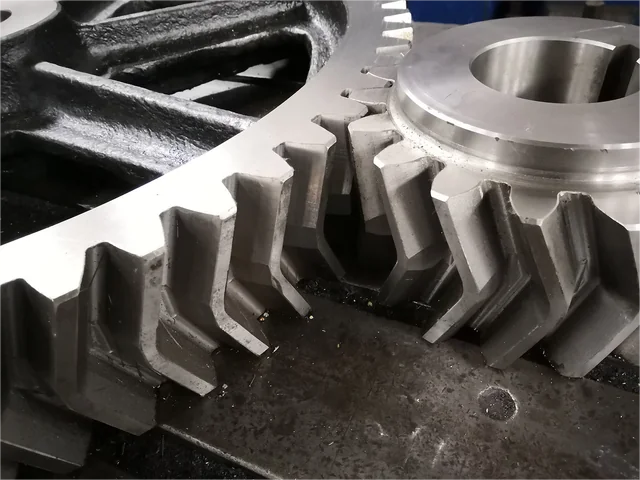About gear transmission types and fault response methods
When manufacturing gears, several typical errors such as eccentricity, pitch error, base pitch error and tooth profile error are usually generated. There are many reasons for gear manufacturers to generate these errors, including errors from machine tool movement, cutting tool errors, errors from improper installation and debugging of tools, workpieces, and machine tool systems, fixture errors, and gear deformation caused by internal stress during heat treatment. When these gear errors are large, it will cause the gear transmission to rotate slowly and quickly with micro-inertia interference, causing impact and vibration when the gear pair is meshed, causing large noise.
Due to assembly technology and assembly methods, the assembly error of “one end in contact and one end hanging” is usually caused when assembling gears; linear deviation of gear shaft and imbalance of gears, etc. One-end contact or linear deviation of gear shaft will cause uneven load on the gear, causing excessive load on individual gear teeth, causing local early wear, and even causing gear tooth breakage in severe cases. Gear imbalance will cause impact vibration and noise.
1. Tooth fracture
During gear transmission, the action force of the driving gear and the reaction force of the driven gear both act on the other gear teeth through the contact point. The dangerous situation is that the contact point is located at the top of the gear teeth at a certain moment; at this time, the gear teeth are like a cantilever beam. The bending stress generated at the root of the gear teeth after being loaded is large. If it is suddenly overloaded or impact overloaded, it is easy to cause overload fracture at the root of the gear teeth.
2. Tooth surface wear or scratches
Gear teeth have relative sliding during meshing transmission, coupled with poor lubrication, unclean lubricating oil, lubricating oil deterioration, low speed heavy load or poor heat treatment quality, which can cause adhesive wear, abrasive wear, corrosive wear and scratches on the gear tooth surface.
3. Tooth surface fatigue
The so-called tooth surface fatigue mainly includes pitting and peeling of the tooth surface. The cause of pitting is mainly due to the micro fatigue cracks caused by the pulsating contact stress on the working surface of the gear teeth. When the lubricating oil enters the surface crack area, it first closes the entrance and then squeezes during the meshing process. The lubricating oil in the micro fatigue crack area expands the crack area on the gear tooth surface under high pressure, causing the surface metal particles to fall off from the tooth surface, leaving small pits to form pitting on the tooth surface. When the fatigue crack on the gear tooth surface continues to expand deeper and farther, it will cause a large area or large pieces to fall off, forming tooth surface spalling.
4. Plastic deformation of tooth surface
When the gear material is soft and the load transmitted is large, plastic deformation of the tooth surface is easy to occur. Under the action of excessive friction between the tooth surfaces, the contact stress of the tooth surface will exceed the material’s anti-extrusion yield limit, and the tooth surface material will enter a plastic state, causing plastic flow of the tooth surface metal. This causes the active gear to form grooves on the tooth surface near the pitch line, and the driven gear to form ridges on the tooth surface near the pitch line, thereby destroying the tooth shape.




